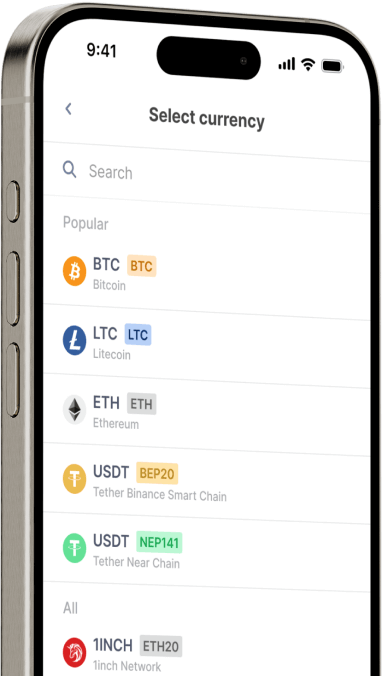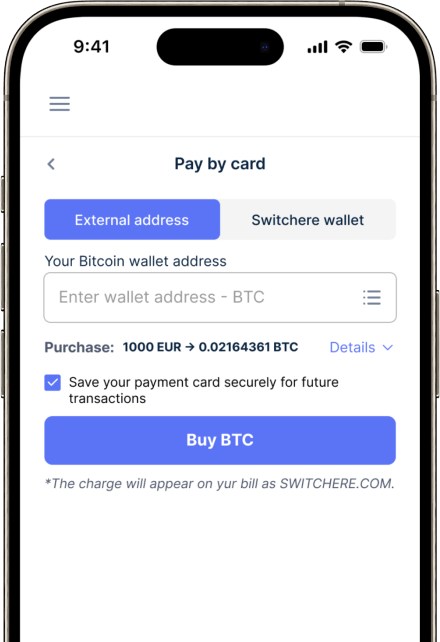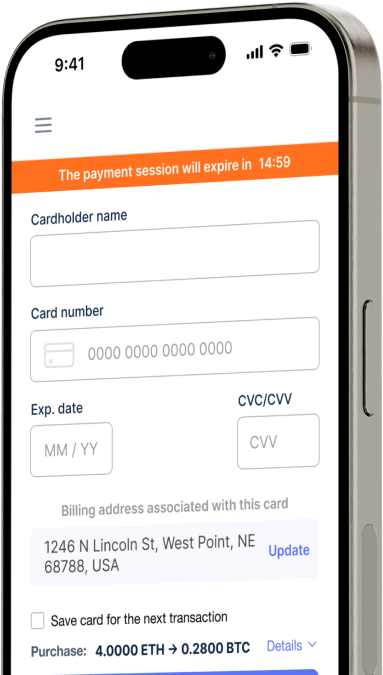Konwertuj
Romanian Leu (RON) na Balancer (BAL) natychmiast
Kupuj Balancer (BAL) z Romanian Leu (RON) łatwo w Switchere i korzystaj z szybkich, bezpiecznych transakcji.
O
Balancer (BAL)
Balancer (BAL) to kluczowy element infrastruktury zdecentralizowanych finansów (DeFi), funkcjonujący jako wysoce elastyczny zautomatyzowany animator rynku (AMM) i protokół płynności. W przeciwieństwie do tradycyjnych AMM, które często wymagają par aktywów 50/50, kluczową innowacją Balancera jest wykorzystanie konfigurowalnych, wielotokenowych pul płynności, znanych również jako inteligentne pule. Pozwala to każdemu na tworzenie samobalansujących się portfeli lub zdecentralizowanych funduszy indeksowych, w których aktywa są utrzymywane w określonych, ważonych proporcjach. Taka konstrukcja nie tylko zapewnia głęboką, programowalną płynność dla traderów, ale także stwarza możliwości arbitrażu, które przywracają pule do ich zamierzonej wagi, skutecznie automatyzując zarządzanie portfelem dla dostawców płynności w jego zdecentralizowanej sieci.
Ewolucja protokołu do wersji Balancer V2 wprowadziła przełomową architekturę pojedynczego Skarbca (Vault). Ta konstrukcja oddziela logikę AMM od zarządzania tokenami i księgowości, znacznie poprawiając wydajność gazu i efektywność kapitałową. Wszystkie transakcje w ekosystemie Balancer są kierowane przez ten jeden Skarbiec, umożliwiając wykonywanie złożonych transakcji wieloetapowych przy znacznie niższych kosztach transakcyjnych. Natywny zasób cyfrowy protokołu, BAL, służy jako kluczowy token zarządzania. Posiadacze tokena użytkowego BAL mogą uczestniczyć w zarządzaniu on-chain, głosując nad aktualizacjami protokołu, zmianami opłat i kierując alokacją nagród za wydobycie płynności, kształtując w ten sposób przyszłość tej niezbędnej infrastruktury Web3.
Kup ponad 150 innych kryptowalut za Romanian Leu (RON)
Inne monety za Romanian Leu (RON)
-
RON do ZRX
-
RON do 1INCH
-
RON do AAVE
-
RON do ACH
-
RON do ALGO
-
RON do TLM
-
RON do ANKR
-
RON do APE
-
RON do NFT
-
RON do API3
-
RON do APT
-
RON do ARPA
-
RON do AUDIO
-
RON do AVAX
-
RON do AVAX
-
RON do AXS
-
RON do BADGER
-
RON do BAL
-
RON do BNT
-
RON do BAT
-
RON do BNB
-
RON do BSW
-
RON do BSV
-
RON do BLUR
-
RON do BONE
-
RON do CTSI
-
RON do CELR
-
RON do CELO
-
RON do CEL
-
RON do LINK
-
RON do CHZ
-
RON do CHR
-
RON do C98
-
RON do COMP
-
RON do CFX
-
RON do PEOPLE
-
RON do CVX
-
RON do ATOM
-
RON do CTC
-
RON do CRV
-
RON do DAI
-
RON do DASH
-
RON do MANA
-
RON do DENT
-
RON do DGB
-
RON do DYDX
-
RON do XEC
-
RON do EOS
-
RON do ETC
-
RON do ENS
-
RON do ETHW
-
RON do FET
-
RON do FIL
-
RON do FLOKI
-
RON do GALA
-
RON do GNO
-
RON do ONE
-
RON do HBAR
-
RON do HOT
-
RON do HOOK
-
RON do ICX
-
RON do ILV
-
RON do IMX
-
RON do INJ
-
RON do ICP
-
RON do IOST
-
RON do IOTX
-
RON do JASMY
-
RON do JST
-
RON do KAVA
-
RON do KCS
-
RON do KSM
-
RON do KNC
-
RON do LDO
-
RON do LQTY
-
RON do LPT
-
RON do LOOKS
-
RON do LRC
-
RON do LUNA
-
RON do MKR
-
RON do MASK
-
RON do EGLD
-
RON do ALICE
-
RON do NEAR
-
RON do XEM
-
RON do NEXO
-
RON do NOT
-
RON do NMR
-
RON do OKB
-
RON do OMG
-
RON do ONT
-
RON do EDU
-
RON do OP
-
RON do OGN
-
RON do CAKE
-
RON do PAXG
-
RON do PENDLE
-
RON do DOT
-
RON do POL
-
RON do QTUM
-
RON do QNT
-
RON do RDNT
-
RON do XRD
-
RON do RVN
-
RON do REN
-
RON do RSR
-
RON do RLC
-
RON do RPL
-
RON do SFP
-
RON do SHIB
-
RON do SKL
-
RON do SXP
-
RON do STND
-
RON do STG
-
RON do XLM
-
RON do GMT
-
RON do STORJ
-
RON do STMX
-
RON do SUSHI
-
RON do SNX
-
RON do USDT (Polygon)
-
RON do USDT (AVAC)
-
RON do USDT (BEP20)
-
RON do USDT (ERC20)
-
RON do USDT (SPL)
-
RON do USDT (NEP141)
-
RON do USDT (FA2)
-
RON do USDT (TRC20)
-
RON do USDT (JETTON)
-
RON do XTZ
-
RON do GRT
-
RON do SAND
-
RON do TFUEL
-
RON do THETA
-
RON do RUNE
-
RON do TON
-
RON do TUSD (BEP20)
-
RON do TUSD (TRC20)
-
RON do TWT
-
RON do UOS
-
RON do UMA
-
RON do UNI
-
RON do USDC (Polygon)
-
RON do USDC (SPL)
-
RON do USDC (OP)
-
RON do USDC (BEP20)
-
RON do USDC (AVAC)
-
RON do USDC (ARB)
-
RON do USDC (ERC20)
-
RON do VET
-
RON do VRA
-
RON do WAXP
-
RON do WOO
-
RON do WLD
-
RON do WBTC
-
RON do WMINIMA
-
RON do XDC
-
RON do YFI
-
RON do YGG
-
RON do ZIL
Jak kupić Balancer (BAL)
Często zadawane pytania
-
Na czym zazwyczaj polega wymiana Ronin (RON) na Balancer (BAL)?
Wymiana RON na BAL jest transakcją międzyłańcuchową (cross-chain), ponieważ RON jest natywnym tokenem sieci Ronin, blockchaina skupionego na grach, podczas gdy BAL jest tokenem ERC-20 na Ethereum. Proces ten wymaga użycia mostu tokenów do przeniesienia aktywów z Ronin na Ethereum, a następnie skorzystania z zdecentralizowanej giełdy (DEX), takiej jak Balancer, w celu wykonania ostatecznej wymiany. Ten wieloetapowy proces jest niezbędny dla interoperacyjności blockchain między ekosystemem Axie Infinity a krajobrazem DeFi na Ethereum.
-
Jakie są główne koszty, takie jak opłaty za gaz, podczas wymiany RON na BAL?
Istnieją trzy główne składniki kosztów. Po pierwsze, nominalna opłata transakcyjna w sieci Ronin, płacona w RON, aby zainicjować transfer przez most. Po drugie, opłata pobierana przez sam most za usługę międzyłańcuchową. Po trzecie, i najważniejsze, opłaty za gaz w Ethereum, płacone w ETH. Poniesiesz koszty gazu za interakcję z inteligentnym kontraktem w celu sfinalizowania wymiany na DEX, takim jak Balancer. Ustawienie odpowiedniej tolerancji poślizgu jest również kluczowe, aby uniknąć nieoczekiwanych zmian cen podczas ostatecznej transakcji.
-
Czym jest most tokenów i jakie są związane z nim ryzyka przy wymianie RON na BAL?
Most tokenów to protokół, który umożliwia transfer aktywów z jednego blockchaina na drugi. W przypadku wymiany RON na BAL, zablokowałby on RON w sieci Ronin i wyemitowałby równoważny opakowany token (np. wRON lub wETH) na Ethereum. Głównym ryzykiem jest podatność inteligentnych kontraktów; mosty są złożone i mogą być celem exploitów, co potencjalnie może prowadzić do utraty środków. Istnieje również ryzyko centralizacji, jeśli most jest kontrolowany przez niewielką liczbę walidatorów. Zawsze używaj renomowanych, dobrze zaudytowanych mostów.
-
Jakie platformy są niezbędne do konwersji RON z sieci Ronin na tokeny BAL?
Konwersja wymaga dwóch głównych typów platform. Po pierwsze, potrzebujesz oficjalnego mostu Ronin Bridge, obsługiwanego przez Sky Mavis, lub podobnego mostu zewnętrznego, aby przenieść swoje RON (często jako opakowane ETH lub inny zasób) z sieci Ronin do głównej sieci Ethereum. Po drugie, potrzebujesz portfela Web3 i dostępu do zdecentralizowanej giełdy na Ethereum, w szczególności Automatycznego Twórcy Rynku (AMM), takiego jak protokół Balancer, gdzie możesz wymienić przeniesiony zasób na BAL.
-
W jaki sposób AMM protokołu Balancer ułatwia ostatni krok w pozyskiwaniu BAL?
Balancer działa jako wysoce elastyczny Automatyczny Twórca Rynku (AMM). Gdy Twoje aktywa z Ronin zostaną przeniesione na Ethereum, wchodzisz w interakcję z pulami płynności Balancer. Jego Inteligentny Router Zleceń (Smart Order Router) automatycznie znajduje najbardziej efektywną ścieżkę handlową, potencjalnie kierując przez wiele pul, aby wymienić Twoje przeniesione aktywa na BAL. W przeciwieństwie do prostych pul dwutokenowych, użycie przez Balancer ważonych, wielotokenowych pul i pojedynczej architektury skarbca (vault) zostało zaprojektowane w celu minimalizacji poślizgu i oferowania lepszych cen transakcji.
-
Jakie są podstawowe kroki bezpieczeństwa podczas wymiany międzyłańcuchowej z RON na BAL?
Po pierwsze, zawsze weryfikuj adresy URL. Używaj tylko oficjalnych stron internetowych Ronin Bridge i protokołu Balancer, dodając je do zakładek, aby uniknąć phishingu. Po drugie, używaj portfela sprzętowego do podpisywania transakcji, chroniąc swoje klucze prywatne. Po trzecie, bądź ostrożny z zatwierdzeniami inteligentnych kontraktów. Udzielaj konkretnych, a nie nieograniczonych, zezwoleń na tokeny i odwołuj je po użyciu. Na koniec, dwukrotnie sprawdź wszystkie szczegóły transakcji, w tym adresy odbiorców i kwoty, przed ich potwierdzeniem w portfelu Web3. Mały błąd może skutkować trwałą utratą aktywów cyfrowych.




